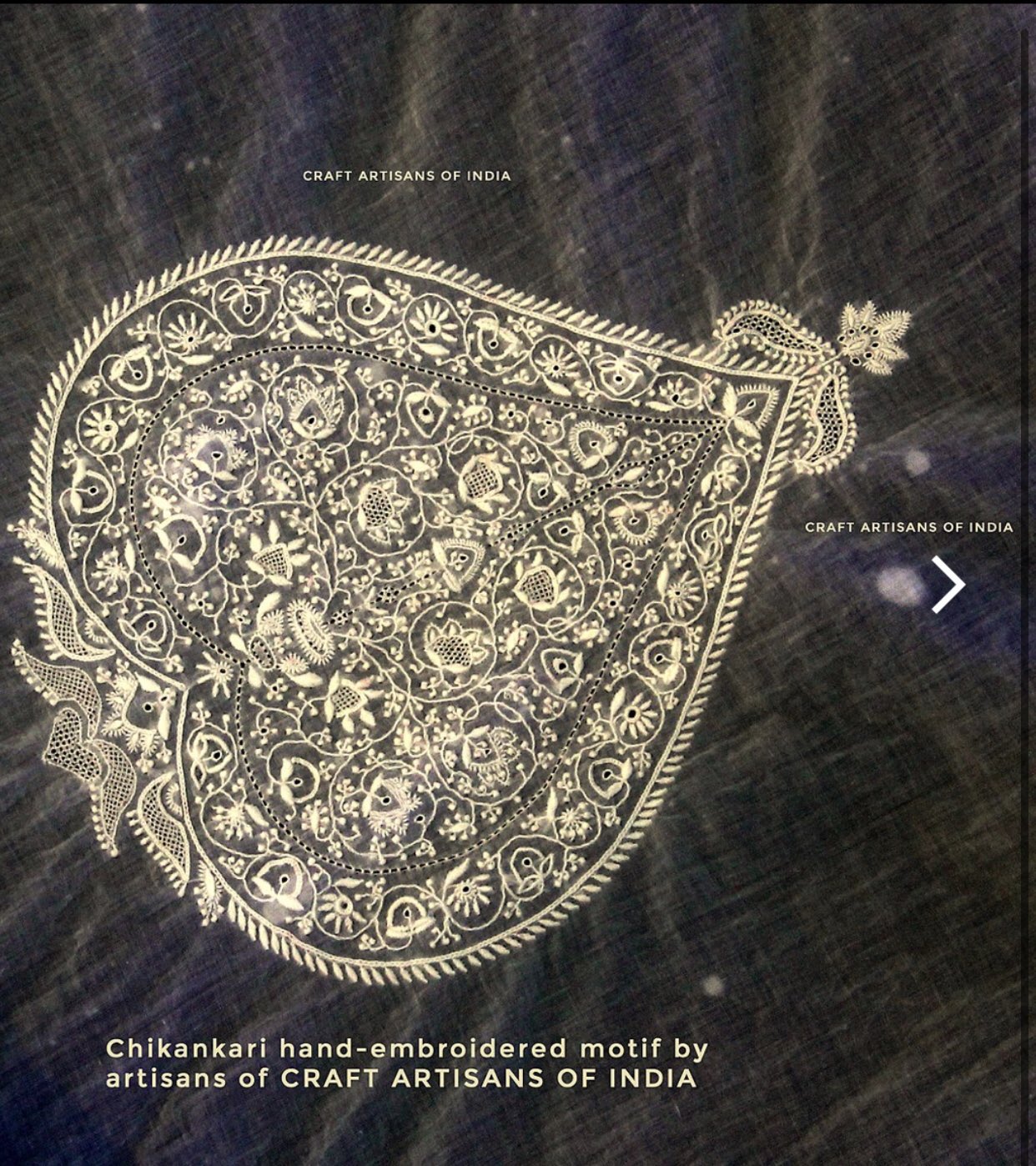Chikankari

Myths spread about chikankari origin
❌ According to Laila Tyabji, “Chikankari stems from the white-on-white embroidery of Shiraz and came to India as part of the cultural baggage of the Persian nobles at the Mughal Court”. A legend narrates that the Mughal “Empress Noor Jehan, a noted aesthete and embroiderer, while making an Eid cap for her husband, the Emperor Jehangir, conceived the idea of using the fine white cotton mull for which Indian weavers were famous, as a base for her stitchery”. Laila Tyabji links chikankari to Shirazi embroidery, which, despite the differences, she says has a “repertoire of pulled, drawn thread, knotted, chain and overlaid stitches strikingly similar to those in the chikankari tradition”.
❌ In Lucknow itself, there are two stories; one is a local version of Noor Jehan’s legend, where the role of the initiator of the craft is played by a princess from Murshidabad who, bored with the life of the zenana, embroidered a very beautiful cap for the nawab, thus becoming his favorite and setting a trend among the other ladies of the court. In another story told to Jasleen Dhamija by Fiaz Khan, one of the master craftsmen in the 60s, the craft was taught to one of his ancestors some two hundred years earlier by a mysterious traveler to whom his relative had offered hospitality. After that the traveler disappeared. Chikankars believe that he was sent by God himself.
Chikankari is Indian in origin, and it did not come from Persia to India as claimed by some.

The Persian origin of chikankari, as claimed by few, is highly unlikely as the white work made in Persia is based on drawn threads, rather than pulled threads which we see in chikan. The Persian work is also geometric, while chikankari is flowing with meandering stems.
Historically, most scholars believe that chikan embroidery originated and developed in ancient Bengal from jamdani weaving. The repairers of jamdani pieces, are said to be the creators of this chikankari technique.
According to Kamala Devi Chattopadhyay chikankari was favoured by Raja Harsha (590-647 CE), who is said to have “a great fondness for white embroidered muslin garments, but no colour, no ornamentation, nothing spectacular to embellish it”. Megasthanes, in the 3rd century BCE, has mentioned the usage of “finest flowered muslin” by the Indians in the court of Chandragupta Maurya.
Please don’t fall for the stories that Chikankari work was brought to India by Persian nobles in the Mughal court. The word itself is of Indic (Bengali) origin, where it means “very fine thing".